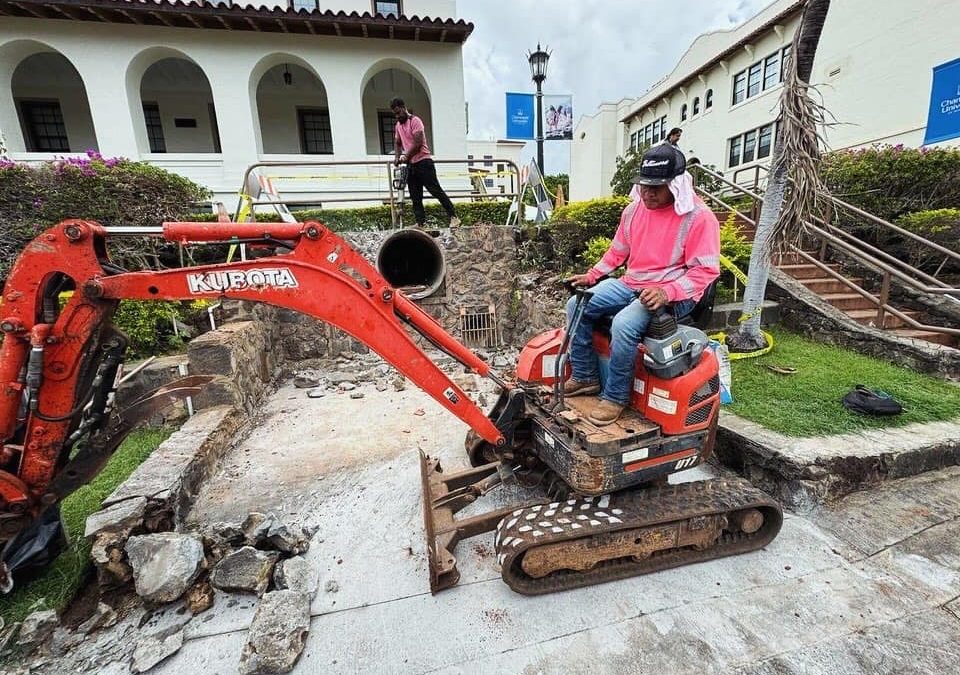Concrete is one of the most widely used building materials in Hawaii, but the islands’ unique climate poses special challenges to its durability. Constant exposure to salty air, heavy rainfall, and high humidity can wear down concrete faster than in many other regions.
For homeowners and property managers, understanding these common issues is the first step to protecting investments and avoiding costly repairs.
By being aware of how Hawaii’s environment affects concrete and taking proactive measures, you can extend the life of driveways, patios, foundations, and other structures. Here are some of the most common concrete problems in Hawaii’s climate and practical ways to prevent them.
Saltwater Exposure and Corrosion
Living near the coast means that concrete is constantly exposed to salty air and ocean spray, which can penetrate the surface and reach the steel reinforcement inside. Over time, this leads to corrosion, cracks, and weakened structures.
- Seal concrete surfaces with high-quality sealants to reduce salt penetration.
- Rinse outdoor concrete with fresh water regularly to wash away salt deposits.
- Choose concrete mixes with low permeability for added resistance.
- Inspect steel reinforcements during construction to ensure proper coverage and protection.
Taking steps to limit salt exposure helps maintain structural strength and reduces long-term damage.
Moisture Damage from Heavy Rainfall
Hawaii’s frequent rain showers and tropical storms expose concrete to constant moisture, which can seep into cracks and pores. When left untreated, this leads to spalling, mold growth, and faster deterioration.
- Ensure proper drainage systems around concrete surfaces to prevent pooling water.
- Repair cracks as soon as they appear to stop water from penetrating deeper.
- Apply waterproof coatings or membranes for added protection.
- Elevate concrete slabs where possible to avoid direct water contact.
By controlling moisture, you can protect concrete from premature wear and maintain its clean appearance.
Cracking from Temperature Changes
Although Hawaii doesn’t experience extreme cold, the combination of warm days, cool nights, and high humidity can still cause concrete to expand and contract. This cycle often results in surface or structural cracks.
- Use expansion joints during installation to allow movement without cracking.
- Choose concrete mixes designed for Hawaii’s climate with proper additives.
- Keep heavy loads away from weak spots or thinner areas of concrete.
- Schedule routine inspections to catch small cracks before they worsen.
Proper installation and maintenance help minimize cracking and keep surfaces safe and visually appealing.
Algae, Mold, and Mildew Growth
The humid, tropical environment makes Hawaii an ideal place for algae, mold, and mildew to grow on concrete surfaces. This not only makes surfaces slippery and unattractive but can also eat away at protective coatings.
- Pressure wash concrete regularly to remove buildup and stains.
- Apply anti-fungal or anti-microbial sealers to reduce growth.
- Improve air circulation and sunlight exposure in shaded areas.
- Trim nearby plants and trees that create damp, shaded spots.
Keeping concrete surfaces clean not only improves safety but also enhances curb appeal.
Erosion and Soil Movement
The islands’ heavy rains and shifting soils can cause erosion beneath concrete slabs, leading to uneven settling, cracks, and structural instability. This is especially common in driveways, patios, and walkways.
- Compact soil properly before pouring concrete to provide a stable base.
- Install retaining walls or barriers in areas prone to erosion.
- Direct rainwater runoff away from concrete with proper landscaping and drainage.
- Use reinforced concrete for areas with higher risk of soil movement.
Addressing soil and erosion issues early prevents costly repairs and keeps concrete surfaces level and secure.
Hawaii’s climate brings unique challenges that make concrete maintenance more demanding than in many other places. From salt exposure and constant moisture to mold growth and soil movement, these issues can shorten the lifespan of concrete if left unchecked.
By sealing surfaces, improving drainage, cleaning regularly, and investing in high-quality materials, property owners can protect their concrete structures for years to come. Taking a proactive approach not only saves money but also ensures that driveways, patios, and foundations remain strong and attractive in Hawaii’s tropical environment.

